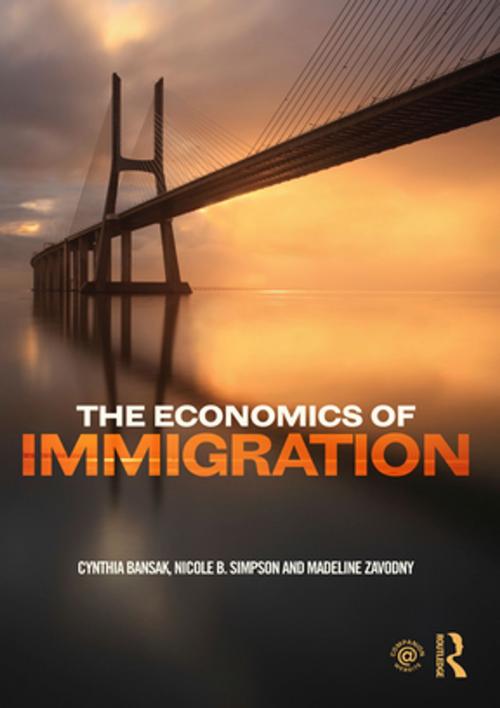| Author: | Cynthia Bansak, Nicole B. Simpson, Madeline Zavodny | ISBN: | 9781317752981 |
| Publisher: | Taylor and Francis | Publication: | April 24, 2015 |
| Imprint: | Routledge | Language: | English |
| Author: | Cynthia Bansak, Nicole B. Simpson, Madeline Zavodny |
| ISBN: | 9781317752981 |
| Publisher: | Taylor and Francis |
| Publication: | April 24, 2015 |
| Imprint: | Routledge |
| Language: | English |
Economics of Immigration provides students with the tools needed to examine the economic impact of immigration and immigration policies over the past century. Students will develop an understanding of why and how people migrate across borders and will learn how to analyze the economic causes and effects of immigration. The main objectives of the book are for students to understand the decision to migrate; to understand the impact of immigration on markets and government budgets; and to understand the consequences of immigration policies in a global context.
From the first chapter, students will develop an appreciation of the importance of immigration as a separate academic field within labor economics and international economics. Topics covered include the effect of immigration on labor markets, housing markets, international trade, tax revenues, human capital accumulation, and government fiscal balances. The book also considers the impact of immigration on what firms choose to produce, and even on the ethnic diversity of restaurants and on financial markets, as well as the theory and evidence on immigrants’ economic assimilation. The textbook includes a comparative study of immigration policies in a number of immigrant-receiving and sending countries, beginning with the history of immigration policy in the United States. Finally, the book explores immigration topics that directly affect developing countries, such as remittances, brain drain, human trafficking, and rural-urban internal migration. Readers will also be fully equipped with the tools needed to understand and contribute to policy debates on this controversial topic.
This is the first textbook to comprehensively cover the economics of immigration, and it is suitable both for economics students and for students studying migration in other disciplines, such as sociology and politics.
Economics of Immigration provides students with the tools needed to examine the economic impact of immigration and immigration policies over the past century. Students will develop an understanding of why and how people migrate across borders and will learn how to analyze the economic causes and effects of immigration. The main objectives of the book are for students to understand the decision to migrate; to understand the impact of immigration on markets and government budgets; and to understand the consequences of immigration policies in a global context.
From the first chapter, students will develop an appreciation of the importance of immigration as a separate academic field within labor economics and international economics. Topics covered include the effect of immigration on labor markets, housing markets, international trade, tax revenues, human capital accumulation, and government fiscal balances. The book also considers the impact of immigration on what firms choose to produce, and even on the ethnic diversity of restaurants and on financial markets, as well as the theory and evidence on immigrants’ economic assimilation. The textbook includes a comparative study of immigration policies in a number of immigrant-receiving and sending countries, beginning with the history of immigration policy in the United States. Finally, the book explores immigration topics that directly affect developing countries, such as remittances, brain drain, human trafficking, and rural-urban internal migration. Readers will also be fully equipped with the tools needed to understand and contribute to policy debates on this controversial topic.
This is the first textbook to comprehensively cover the economics of immigration, and it is suitable both for economics students and for students studying migration in other disciplines, such as sociology and politics.















